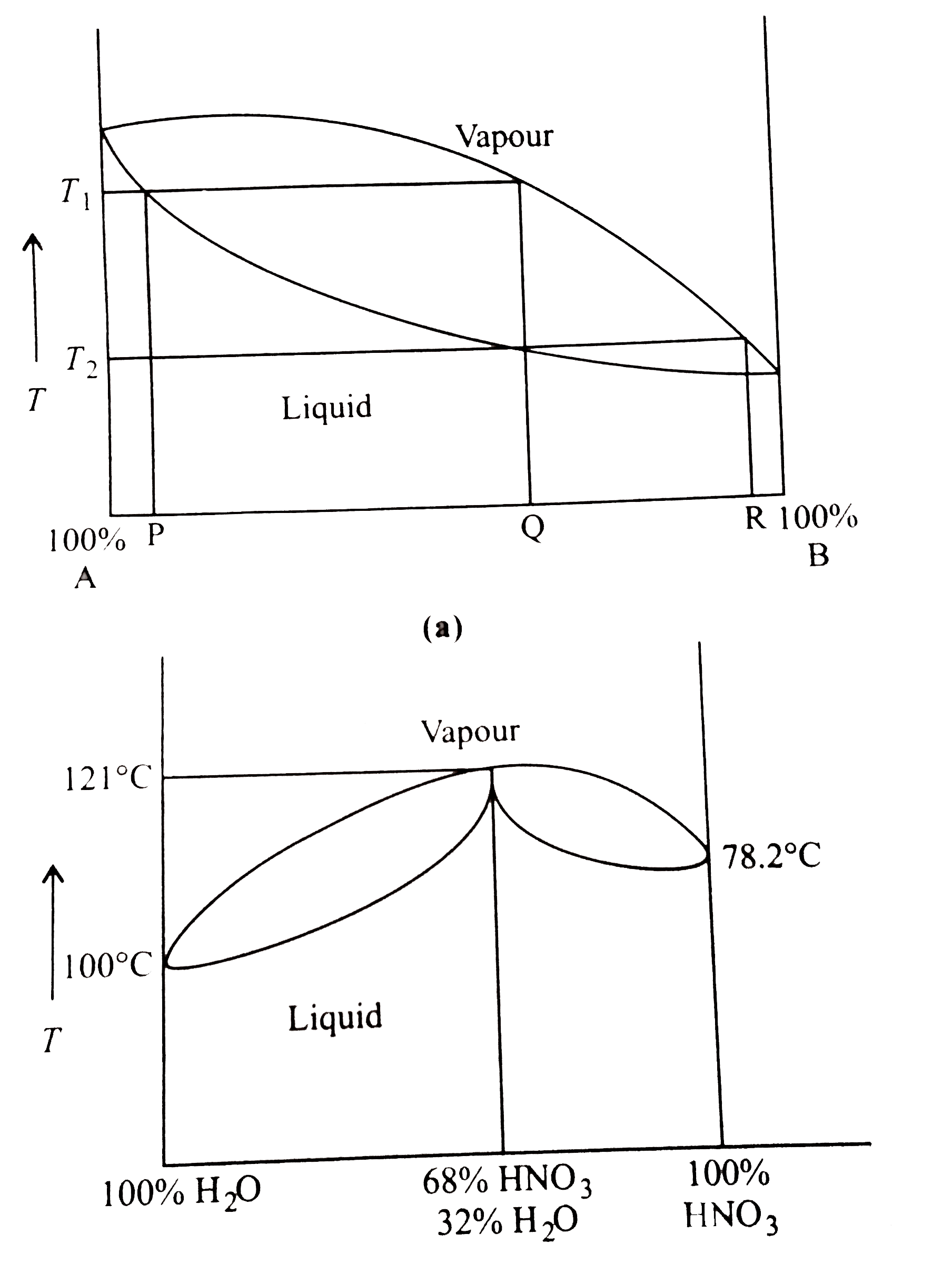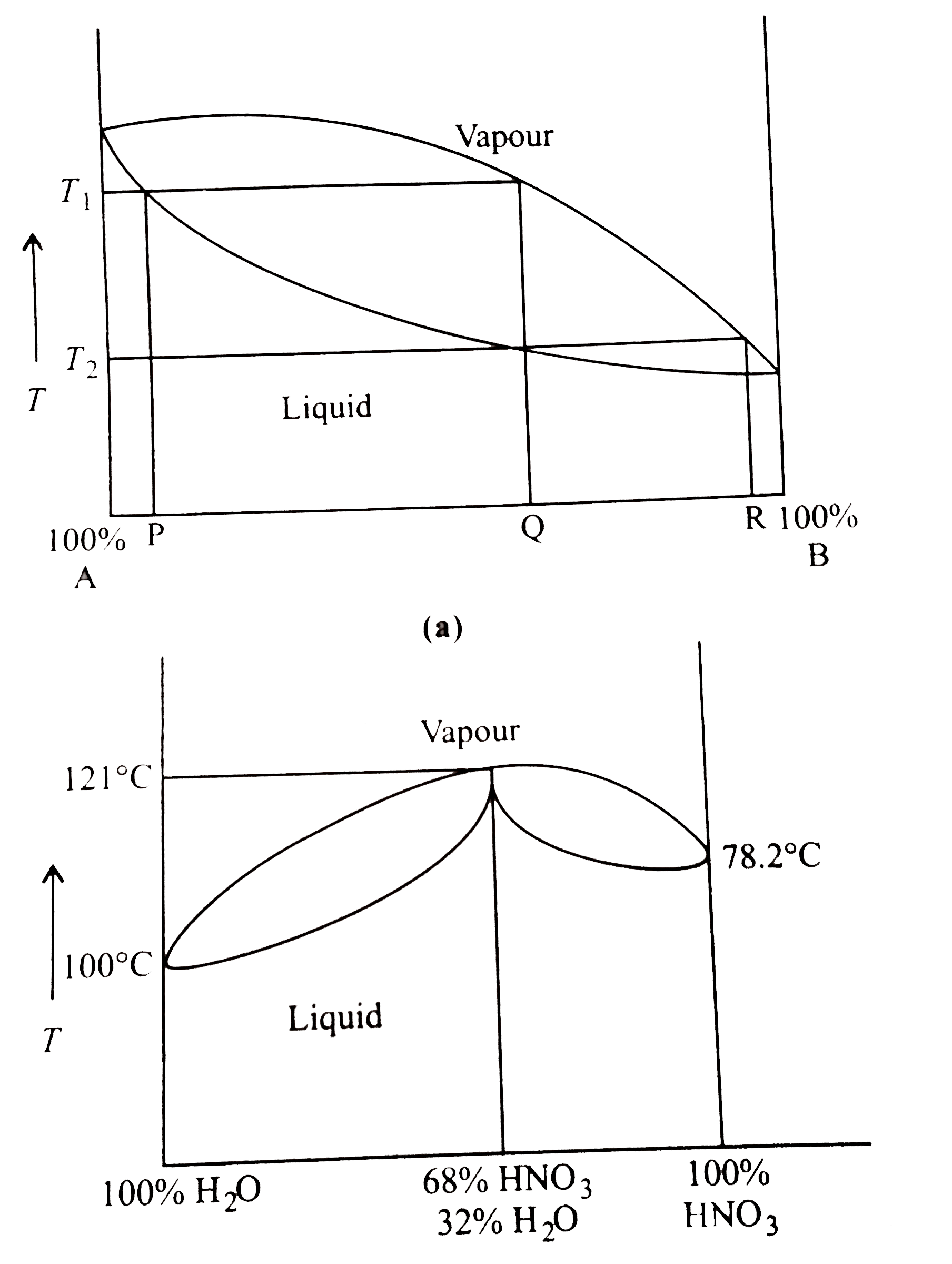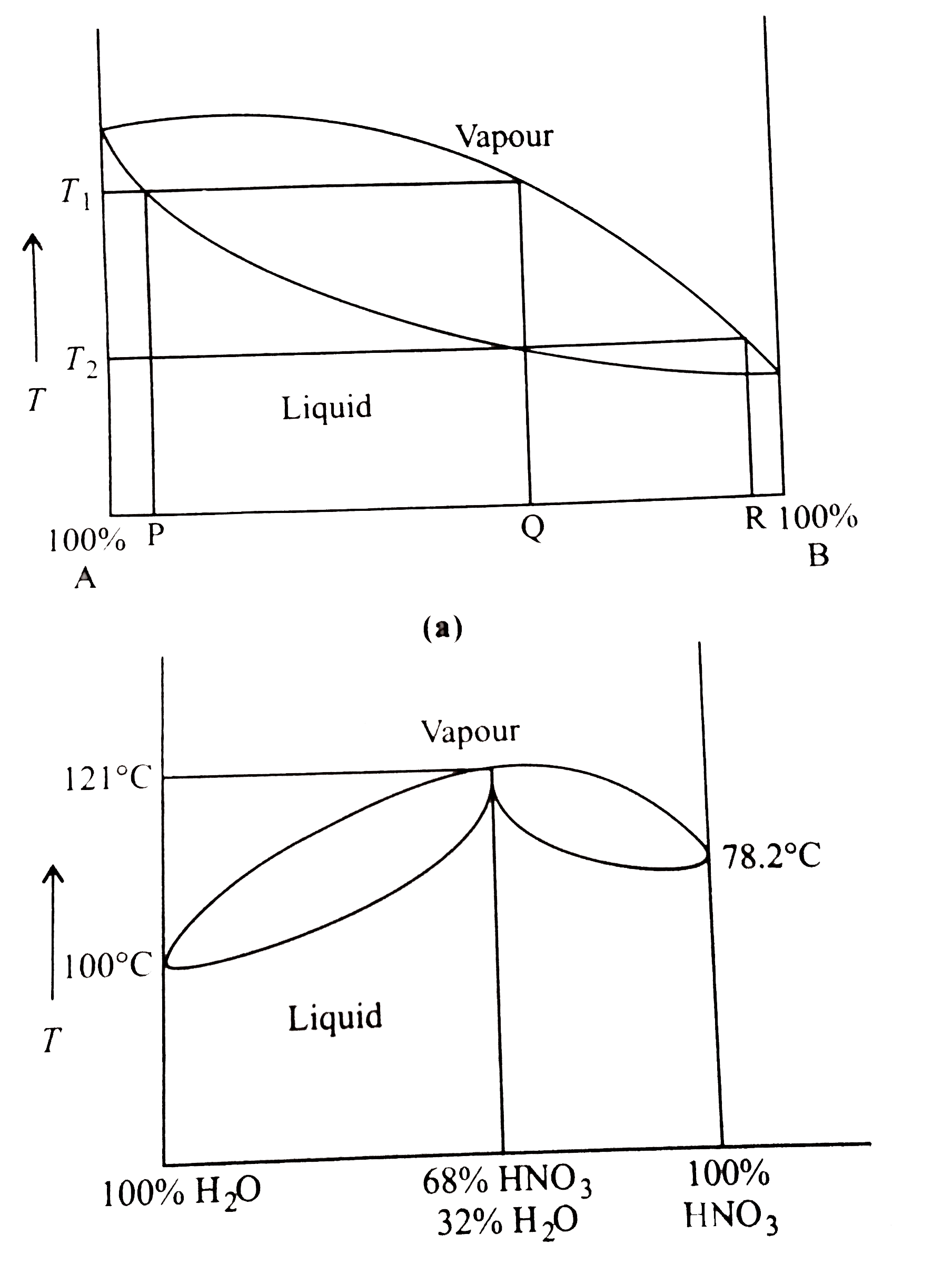represents the distillation of mixture of liquid A and liquid B which gives both of pure liquid A and B . Represents the azeotropic mixture of HNO3 and H2O which distillation gives an azeotropic mixture and either of pure liquid. We cannot separate both the pure liquid, i.e., H2O and HNO3.
What is the result of distilling a mixture of 50%HNO3 and 50%H(2)O ?

A
Pure water and azeotropic mixtue can be separated.
B
Pure H2O and pure HNO3 can be separated.
C
Pure HNO3 and azeotropic mixture can be separated.
D
None of these
Video Solution
Text Solution
The correct Answer is:A
The composition of 50%H2O and 50%HNO3 will lies in between the azeotropic mixture and pure H2O. Therefore , distillation of such composition will give pure H2O and azeotropic mixture.
|
Updated on:21/07/2023
Related Playlists
- BOOK - CENGAGE CHEMISTRYCHAPTER - SOLUTIONSEXERCISE - Exercises (Multiple Correct)25videos
SOLUTIONS
- BOOK - CENGAGE CHEMISTRYCHAPTER - SOLUTIONSEXERCISE - Exercises (Single Correct)99videos
SOLUTIONS
- BOOK - CENGAGE CHEMISTRYCHAPTER - SOLUTIONSEXERCISE - Solved Examples40videos
SOLUTIONS
- BOOK - CENGAGE CHEMISTRYCHAPTER - SOLID STATEEXERCISE - Ex 1.2 (Objective)9videos
SOLID STATE
- BOOK - CENGAGE CHEMISTRYCHAPTER - SURFACE CHEMISTRYEXERCISE - Archives Subjective2videos
SURFACE CHEMISTRY
Knowledge Check
- Question 1 - Select One
represents the distillation of mixture of liquid A and liquid B which gives both of pure liquid A and B . Represents the azeotropic mixture of HNO3 and H2O which distillation gives an azeotropic mixture and either of pure liquid. We cannot separate both the pure liquid, i.e., H2O and HNO3.
What is the result of distilling a mixture of 80%HNO3 and 20%H2O? APure H2O and azeotropic mixture can be separated.BPure H2O and pure HNO3 can be separated.CPure HNO3 and azeotropic mixture can be separated.DNone of these
APure H2O and azeotropic mixture can be separated.BPure H2O and pure HNO3 can be separated.CPure HNO3 and azeotropic mixture can be separated.DNone of these - Question 1 - Select One
represents the distillation of mixture of liquid A and liquid B which gives both of pure liquid A and B . Represents the azeotropic mixture of HNO3 and H2O which distillation gives an azeotropic mixture and either of pure liquid. We cannot separate both the pure liquid, i.e., H2O and HNO3.
a solution of 50% of B on distillation results into
 ASeparation of an azeotropic mixture and pure A.BSeparation of an azeotropic mixture and pure B.CSeparation of both pure A and pure B.DNone of these
ASeparation of an azeotropic mixture and pure A.BSeparation of an azeotropic mixture and pure B.CSeparation of both pure A and pure B.DNone of these - Question 1 - Select One or More
represents the distillation of mixture of liquid A and liquid B which gives both of pure liquid A and B . Represents the azeotropic mixture of HNO3 and H2O which distillation gives an azeotropic mixture and either of pure liquid. We cannot separate both the pure liquid, i.e., H2O and HNO3.
At temperature T1 and composition Q, which of the following is true?
 AVapour phase is richer in B while liquid phase is richer in A.BDistillation of composition Q gives only pure A.CDistillation of composition Q gives only pure A and pure B.DDistillation of composition Q gives higher percentage of B and A.
AVapour phase is richer in B while liquid phase is richer in A.BDistillation of composition Q gives only pure A.CDistillation of composition Q gives only pure A and pure B.DDistillation of composition Q gives higher percentage of B and A. - Question 1 - Select One
represents the distillation of mixture of liquid A and liquid B which gives both of pure liquid A and B . Represents the azeotropic mixture of HNO3 and H2O which distillation gives an azeotropic mixture and either of pure liquid. We cannot separate both the pure liquid, i.e., H2O and HNO3.
Which of the following statements is/are correct?
i. HNO3 solution is not obeying the Raoult's law.
ii. More the difference in vapour pressure of pure compounds forming a mixture, easier to separate them through distillation.
iii. T2 is less than T1 because the liquid of composition Q is richer in more volatile component.
 A(ii) and (iii)B(ii)C(i) and (ii)D(i),(ii) and (iii)
A(ii) and (iii)B(ii)C(i) and (ii)D(i),(ii) and (iii) - Question 1 - Select One
Mixture of conc. HNO3 and conc. H2SO4 is known as
ASulphonating mixtureBNitration mixtureCExplosion mixtureDFusion mixture - Question 1 - Select One
Benzene on treating with a mixture of conc. HNO3andH2SO4 at 100∘C gives
ANitrobenzeneBm - dinitrobenzeneCo - dinitrobenzeneDp - dinitrobenzene - Question 1 - Select One
Benzene on treatment with a mixture of conc. HNO3 and con. H2SO4 at 373K gives
ANitrobenzeneBm-DintrobenzeneCp-DintrobenzeneDn-Dinitrobenzene - Question 1 - Select One
Which is the correct order of decreasing boiling point of azeotropic mixtures X−H2O?
AHI>HBr>HF>HClBHI>HCl>HBr>HFCHF>HCl>HBr>HIDHCl>HF>HBr>HI - Question 1 - Select One
In a nitrating mixture (conc. HNO3+ conc. H2SO4) nitric acid acts as
Aan acidBbaseCa catalystDan oxidising agent. - Question 1 - Select One
Pure water boils at 373.15K and nitric acid boils at 359.15K. An azeotropic mixture of H2O and HNO3 boils at 393.15K. Distilling the azeotropic mixture will cause
Apure water to distil over firstBpure nitric acid to distil over firstCone of them to distil over with a small amount of the other.Dboth of them to distil over in the same composition as that of the mixture being distilled.

